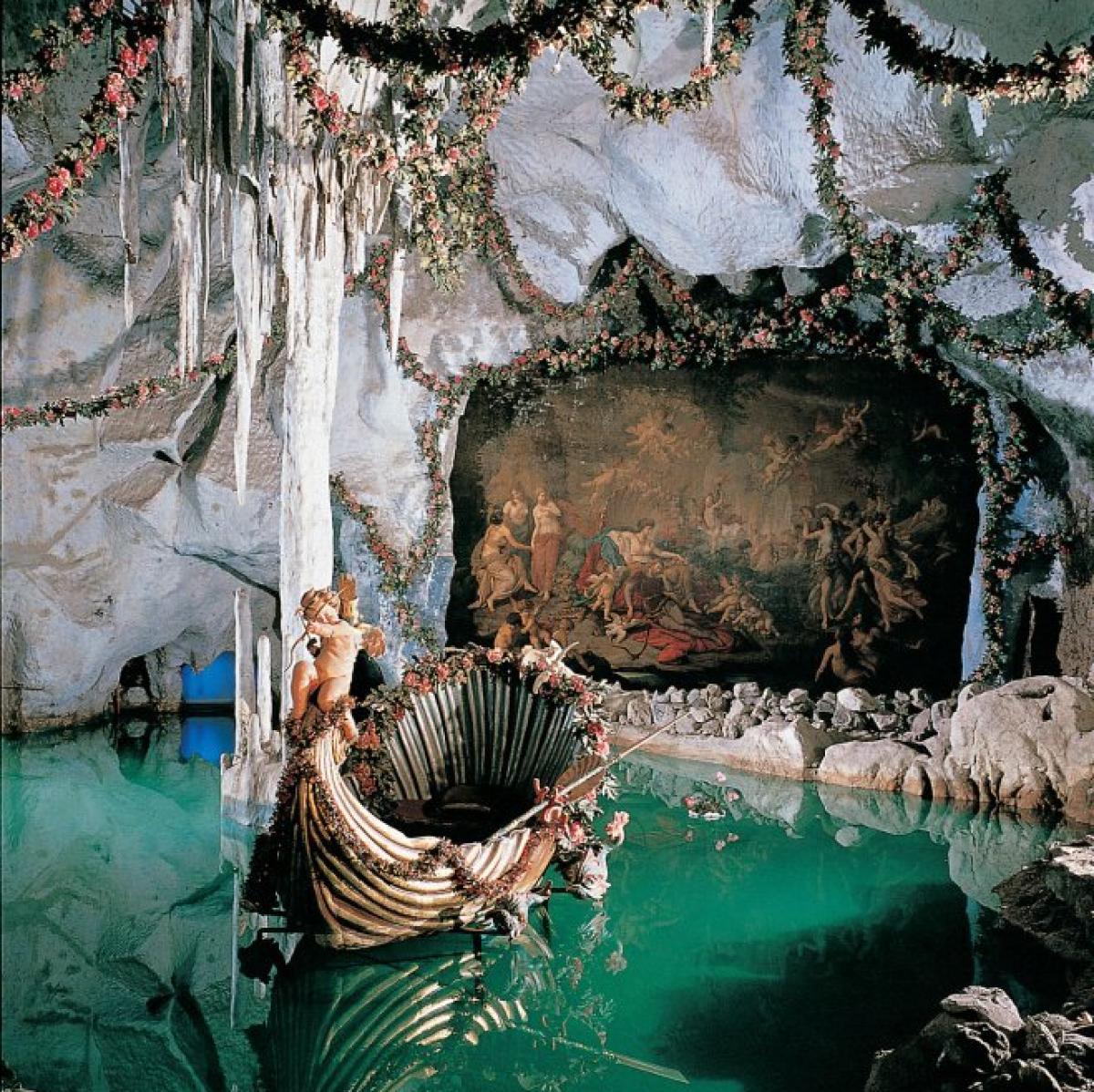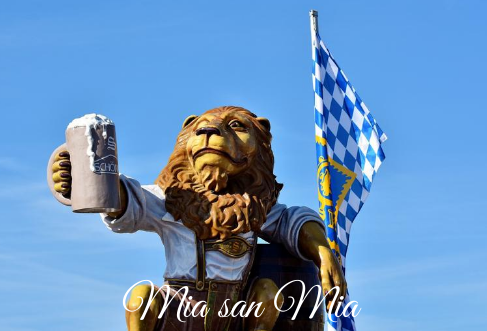Schloss Linderhof ist das kleinste der drei Schlösser König Ludwigs II. aber das einzige das noch zu seinen Lebzeiten vollendet wurde. Es ist ein wunderschöner Ort und es gibt viele Gründe, warum es unbedingt einen Besuch wert ist. Es wurde im Stil des französischen Rokoko erbaut und ist einfach einzigartig in seiner Architektur und Ausstattung.
AHA! Cool...
Vom Königshaus zum Typ Lustschloss
Linderhof, ein zum Militärfohlenhof Schwaiganger gehöriges landwirtschaftliches Anwesen nahe Ettal, war Ludwig II durch die gemeinsamen Ausritte mit seinem Vater König Maximilian II im königlichen Jagdhaus bekannt, das neben dem Lynderhof-Anwesen gelegen war. Schon als Kronprinz übernachtete Ludwig II. mit seinem Vater bei zahlreichen Jagdausflügen im "Königshäuschen, wie es sich damals nannte
Anstelle des relativ einfachen Gebäudes plante Ludwig viele Jahre später schier Gewaltiges - ein Schloss nach dem Vorbild von Versailles sollte errichtet werden. Da das Tal hierfür jedoch zu eng war, wurde der Plan später auf der Herreninsel im Chiemsee umgesetzt und Schloss Herrenchiemsee entstand. Für Linderhof wurde jedoch ein neues Projekt entworfen und auch verwirklicht.
In das prunkvolle Schlösschen, das wir heute kennen, verwandelte Linderhof sich im Laufe von sechs Bauphasen. Immer wieder ließ Ludwig II. das Häuschen zwischen 1869 und 1885 aus- und umbauen. Ludwig II. liebte Linderhof sehr. Ganz besonders das Forsthaus, das er sich in der ersten Bauphase zum Königshäuschen ausbauen ließ. Als das Haus 1874 seiner Baubegeisterung in den Weg geriet, ließ er es nicht etwa abreißen, sondern um etwa 300 Meter nach Westen versetzen. Es steht noch heute im Park von Linderhof.
Erst als Ludwig II 1873 die Insel Herrenwörth (heute: Herrenchiemsee) im Chiemsee erworben und das Versailles-Projekt dorthin verlagert hatte, entwickelte sich aus diesem Provisorium die Schloss- und Gartenanlage, wie wir sie heute kennen.
Das unerreichte Vorbild war der "Sonnengott"...
Neben der mystischen Welt des Orients und der ritterlich-romantischen Epoche des Mittelalters war es der glanzvolle Hofstaat der Bourbonen-Dynastie, der Ludwig II in seinen Bann gezogen hatte. Ganz nach dem Vorbild von "Sonnenkönig" König Ludwig XIV in Frankreich, den er sehr verehrte. Ludwig II Vorstellung vom eigenen Amt war geprägt von der uneingeschränkten Machtfülle der großen französischen Könige des Absolutismus. Nur: Sein übersteigertes Herrscherbewusstsein stand in keinem Verhältnis zu seinen Möglichkeiten.
Der Bau von Schloss Linderhof folgte dem Typos des "Lustschlosses", der im 18. Jahrhundert in Frankreich entstand und bald in ganz Europa in den Schlossparks gebaut wurde. Hier erschuf sich der exzentrische Monarch mit fantasievoll ausgestatteten Räumen und Kabinetten sein ureigenes ‚Lustschloss‘, ein kleines persönliches Refugium im Gegensatz zu den repräsentativen Palästen von Herrenchiemsee und Neuschwanstein. Als Lustschloss bezeichnet man ein Schloss, das dem privaten Vergnügen diente und abseits von Hofzeremoniell und Staatspflichten in der Freizeit bewohnt oder besucht wurde und sich meist in der Nähe größerer Residenzen befand.
Unglaublich
Ein Schloss für sich allein...
Ludwig II war ein Einzelgänger und erschuf sich mit Schloss Linderhof sein eigenes Reich, sein Schloss für sich allein. Das Linderhof nur für eine Person gebaut wurde, die soweit wie möglich allein sein wollte, sieht man an der Größe der Räume. Aber: selbst für einen Monarchen sind die erlesenen Räume höchst spektakulär möbliert, die kunsthandwerkliche Qualität ist ohne jeden Vergleich.
Tischleindeckdich...
Außerdem gibt es im Speisesaal einen ungewöhnlichen Speisenaufzug, ein sogenanntes ‚Tischleindeckdich‘, zu bewundern. Der spezielle Esstisch wurde hierbei mit einer Kurbelmechanik durch eine Luke nach unten in die Küche gelassen. Nach dem Eindecken wurde er wieder nach oben transportiert, sodass der menschenscheue König völlig ungestört dinieren konnte.
Venusgrotte

Venusgrotte Quelle: Augsburger Allgemeine
Schloss Linderhof wurde ein kleines Juwel im Stil des französischen Rokoko - und ein Versuchslabor für technische Spielereien. So ließ er in einen nahen Hügel eine 100 Meter lange künstliche Grotte einbauen, auf deren See er nachts zwischen echten Schwänen auf- und abruderte. Sie war mit Kohlenstablampen elektrisch beleuchtet, für die 24 Dynamomaschinen den Strom lieferten. Mit Hilfe von Farbgläsern konnte die Grotte verschiedenartig beleuchtet werden.
Eine Wellenmaschine bewegte den kleinen künstlichen See, dessen Wasser, wie auch die ganze Grotte beheizbar war, um eine angenehme Badetemperatur zu erreichen. Je nach Stimmungslage konnte er die unterirdische Anlage blau oder rot illuminieren. Zuvor hatte er einen Ingenieur nach Capri geschickt, der das Blau der Originalgrotte studieren musste.
Was gibt's Prickelndes zu sehen
Parkanlagen des Schlosses
Die Parkanlagen des Schlosses sind nicht weniger eindrucksvoll als das Schloss selbst. Die gewaltige 53 Hektar große Gesamtanlage wurde zwischen 1874 und 1880 unter der Leitung des bayerischen Hofgärtners und Gartengestalters Carl von Effner geschaffen. Der nach dem Vorbild französischer und italienischer Barock- und Rokokogärten angelegte und kreuzförmig um das Schloss gruppierte zentrale Teil begeistert mit seinen Terrassengärten und Parterre-Anlagen.
Barock sind die in der Mittelachse des Schlosses angelegten Terrassen mit Wasserbassins, Brunnen und Fontänen, Statuen und Vasen, die geometrischen Blumenbeete, die Laubengänge, die lange Kaskade mit Neptunbrunnen und die beiden Blickpunkte Pavillon und Venustempel. Von Vorbildern aus englischen Landschaftsgärten stammen die naturnahe, unregelmäßige Gestaltung des umgebenden Parks mit den exotischen Bauten.
König Ludwig II forderte von seinen Architekten natürlich eine schnellstmögliche Fertigstellung der Anlagen. Zum rascheren Transport von Baumaterial installierten die Techniker eigens eine Rollbahn. Selbst die Parkbäume wurden mit einer kräftigen Düngung von jährlich bis zu 10 Fuhren Rindermist zu schnellerem Wachstum angeregt.
Etwas ganz besonderes sind die Parkbauten, welche die Begeisterung Ludwigs II für die Orientmode und die Musikdramen Richard Wagners widerspiegeln. Der Orientmode, die es schon seit dem frühen 19. Jahrhundert gab und die auch Ludwig II pflegte, entstammen das Marokkanische Haus und der Maurische Kiosk. Die drei im Park errichteten Bühnenbilder Hundinghütte (1.Akt der "Walküre"), Einsiedelei des Gurnemanz (3.Akt des "Parsifal") und Venusgrotte (1.Akt des "Tannhäuser") entstammen den Dramen Richard Wagners. Jedes Gebäude ist eine Welt für sich.
Fontäne vor dem Schloss und Neptunbrunnen

Neptunbrunnen mit Kaskaden Quelle: Flickr
Ein Highight ist natürlich vor dem Eingang des Schlosses das große Wasserbecken, in dem regelmäßig die ca. 22m hohe Wasserfontäne aufsteigt. Hierzu reicht der Wasserdruck (30 Liter Wasser pro Sekunde!), der aus dem natürlichen Gefälle generiert werden kann. Nicht nur vor dem Schlossgebäude, sondern auch dahinter spielt Wasser & seine Kraft eine besondere Rolle. Denn von seinem Schlafzimmerfenster aus, hatte König Ludwig II. einen freien Blick auf eine Wasserkaskade, die Wasser über zahllose Treppen den Berg herunter fließen lässt, um schließlich in einem Brunnen mit Neptun-Figur zu enden.
Der Neptunbrunnen mit seinen überlebensgroßen Zinkgussplastiken umfasst Neptun, zwei Tritonen und drei Pferde. Auf der Brunnenrückwand sitzen zwei weitere Puttenpaare. Die Pferde und der Triton Südost sind mit Wasserspielen ausgestattet. Im Brunnenbecken sind zusätzliche Wasserfontänen integriert. Angehäufte große Steine dienen der optischen Verbindung zwischen den Figuren.
Marokkanisches Haus
Der 1878 auf der Weltausstellung in Paris erworbene Ausstellungspavillon wurde nach den Wünschen von Ludwig II im Inneren umgestaltet und ursprünglich auf der Stockalpe in der Nähe der österreichischen Grenze errichtet. Das nach dem Tod des Königs von einem Privatmann erworbene Holzgebäude wurde 1980 vom Staat zurückgekauft und steht seit 1998 im Schlosspark.
Ludwigs Kosename für Linderhof war übrigens "Meicost Ettal",
ein Anagramm von "L'état, c'est moi" (Der Staat bin ich), dem Motto Ludwigs XIV.
